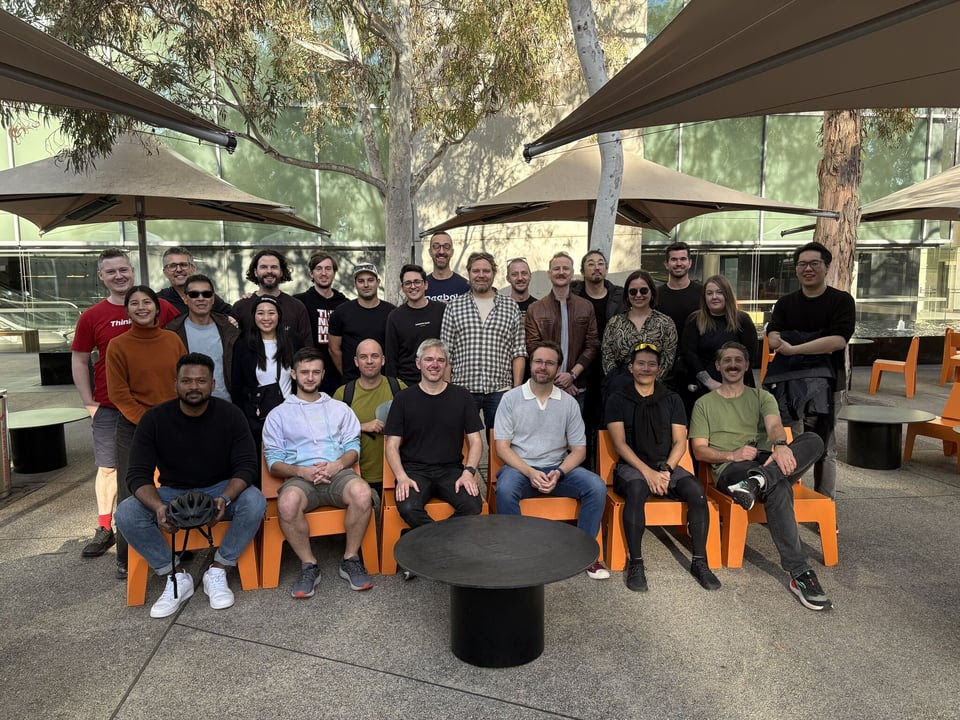It’s been a busy period of collaboration at Thinkmill. We’ve been helping startups, scale-ups, and government departments refine user experience, strengthen systems, and ship faster with confidence.
We recently published a new case study about our long term partnership with AnywhereWorks, highlighting how we helped their teams deliver an amazing customer experience through engineering and design system services.
Connecting in Canberra
In May, we came together in Canberra to collaborate, and learn together. Between workshops and show-and-tells, we found time for board games, team meals, and a treasure hunt through the National Gallery. It was an invaluable opportunity to step away from screens, trade ideas in person, and remind ourselves how much good work comes from good company.
Introducing audits: a new offering to help you find and fix the friction in your product and systems
Over the course of many years, we’ve worked with product teams to uncover friction, improve accessibility, and bring design and engineering into alignment. These new audits grow directly out of our experience – combining strategic and technical depth into a focused, outcome-driven format that helps teams move faster and with greater confidence.
They’re also a simpler and more affordable way to see what it’s like to work with us before taking on a larger engagement. You get the same people, the same thinking, and the same collaborative approach in a format that delivers results and provides a sense of what partnering with us feels like.
Accessibility Audit
Most accessibility audits tell you what’s broken. Ours helps you understand why, and fix issues where they start. We combine real accessibility testing with system-aware analysis to find root causes in your code, components, and patterns. The result? Fixes that improve usability for everyone and scale across your product.
Design System Audit
Design systems promise consistency and speed, but only when design, code, and product stay aligned. Our design system audit reveals where drift, duplication, or process gaps are slowing you down, and gives you clear, actionable steps to get your system performing again. You’ll come away with a roadmap that reconnects design and engineering to your delivery goals.
UX Audit
Our UX audits go beyond the interface to map how your product’s experience and tech stack work together. We pinpoint where friction might cost you conversion, retention, or team efficiency, and give you design-and-engineering-ready recommendations your team can ship.
Keystone update: Dynamic Fields and the Actions API
Two powerful new features are now available in Keystone’s pre-release builds. Both are designed to make the Admin UI more flexible and developer-friendly.
Dynamic field visibility
You can now conditionally show or hide fields in the Admin UI as you edit, not just after saving. This makes for efficient and contextually relevant editing experiences.
Actions API
One of the community’s most requested features, Keystone now offers a unified, built-in way to define and trigger custom actions across your app. Previously, this required combining multiple patterns like GraphQL schema extension, virtual fields, or Admin UI customisations. The new Actions API simplifies that into a single, consistent approach.
You can start using both features today in the latest pre-release builds.
Curated links
When design tokens become technical debt. Thinkmill designer Murphy Trueman breaks down how design tokens – when poorly structured or scaled too quickly – can slow teams down instead of speeding them up. She also shares how to prevent this by treating tokens as part of the system’s architecture, not just its styling.
Vertical Metrics. With the recently published text-box property in CSS, understanding font metrics matters more than ever. This handy tool lets you upload your own fonts, or pick them from Google Fonts to see exactly how metrics impact spacing, alignment, and what’s getting trimmed.
SVG to CSS Generator. A new tool that converts any SVG shape into pure CSS, powered by the recently released shape() function. Create single-element, responsive shapes without the usual ViewBox headaches.
The European Accessibility Act: Technical Aspects of Compliance. Now in effect across the EU, the EAA expands accessibility requirements beyond websites to include apps, devices, and digital services – with WCAG as its foundation. It’s a major shift toward making accessibility a product capability, not just a compliance goal. If your team is navigating these standards, our Accessibility Audits can help you meet (and exceed) them.
Thanks for reading! Until next time 👋
